Legend has it that a ghost train lives on in downtown Stevensville. Given the tumultuous history surrounding the railroad and the restless formative years of the Stevensville Station, there may be some fact behind this tale.
The Stevensville Station is the only railroad building that escaped destruction after the short-lived Kent Island rail service ended in 1956. Thirty-one years later and after serving two roles, the fate of the then 85-year-old building was now uncertain.
Constructed in 1902 with the rail line extension to Kent Island, the station once stood 400 feet northeast of the split between Love Point and Old Love Point Roads. According to waterman Melvin “Mel” Clark (1922-2008) the station was moved to the end of nearby State Street in the 1950s where the owner rented it as a residence. Mary Ellen Hines lived in the two-room building with her young daughters, Diane (12 years) and Stephanie (8 months) in the 1970s. After their tenure, the station was abandoned and left to rot.
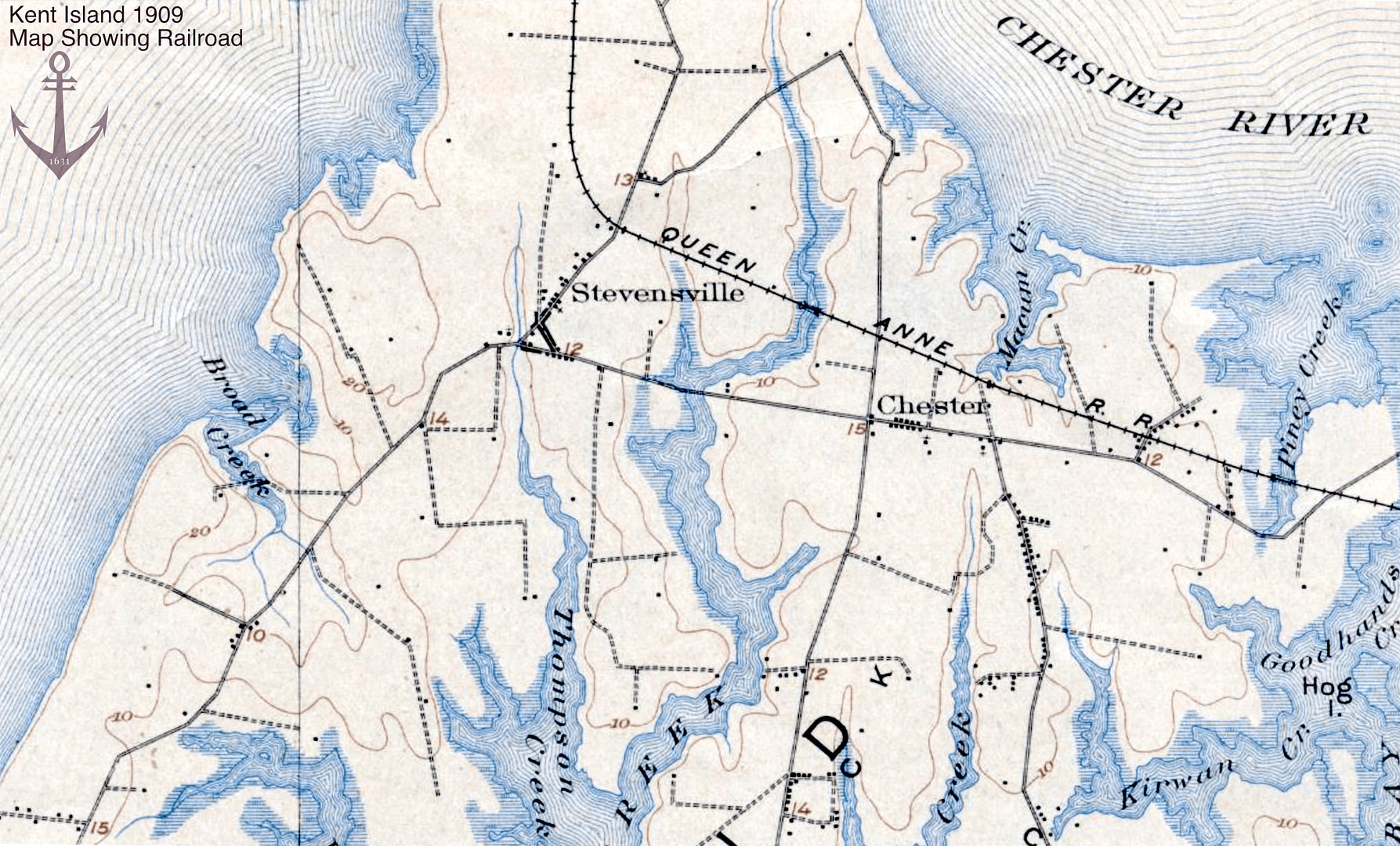
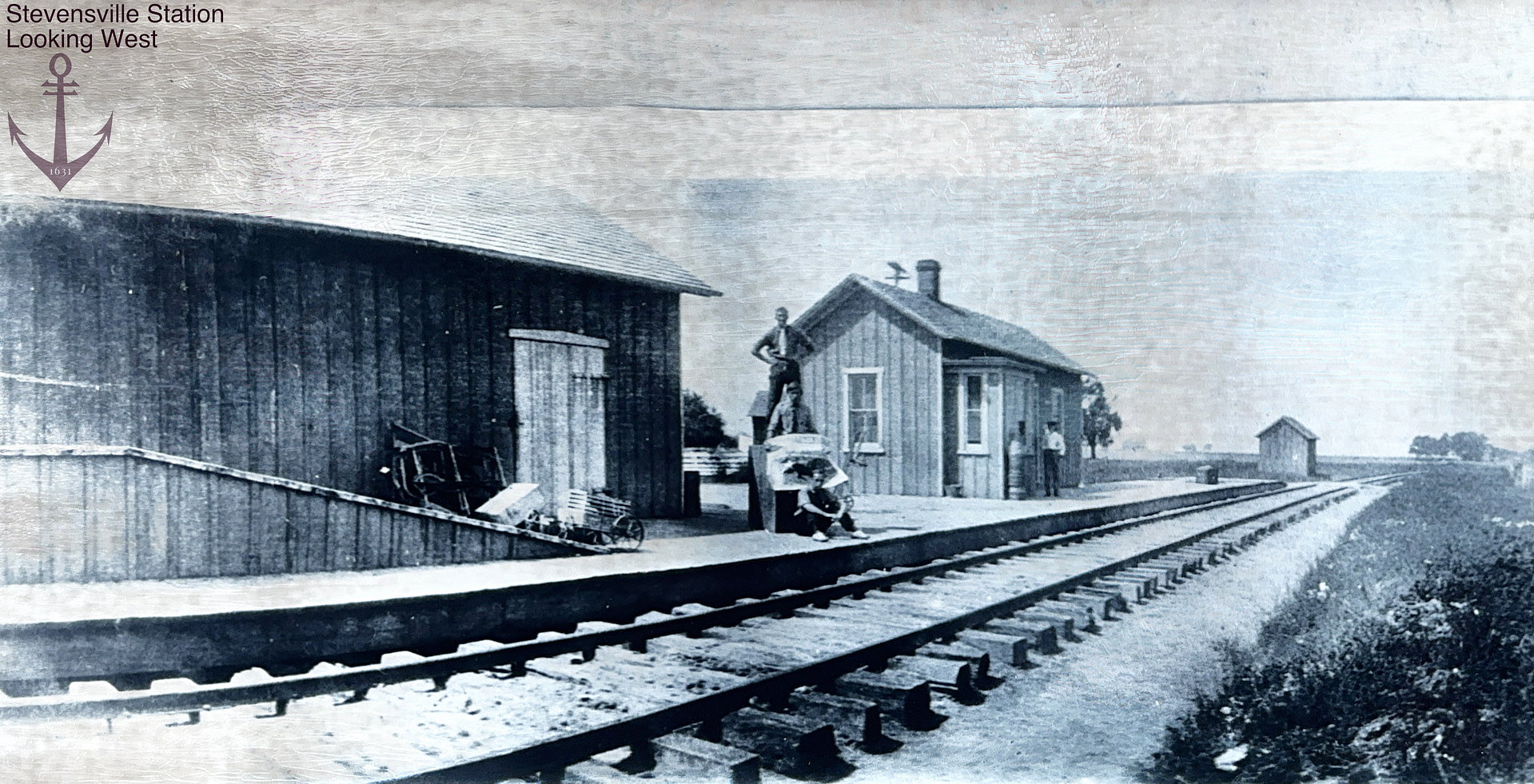
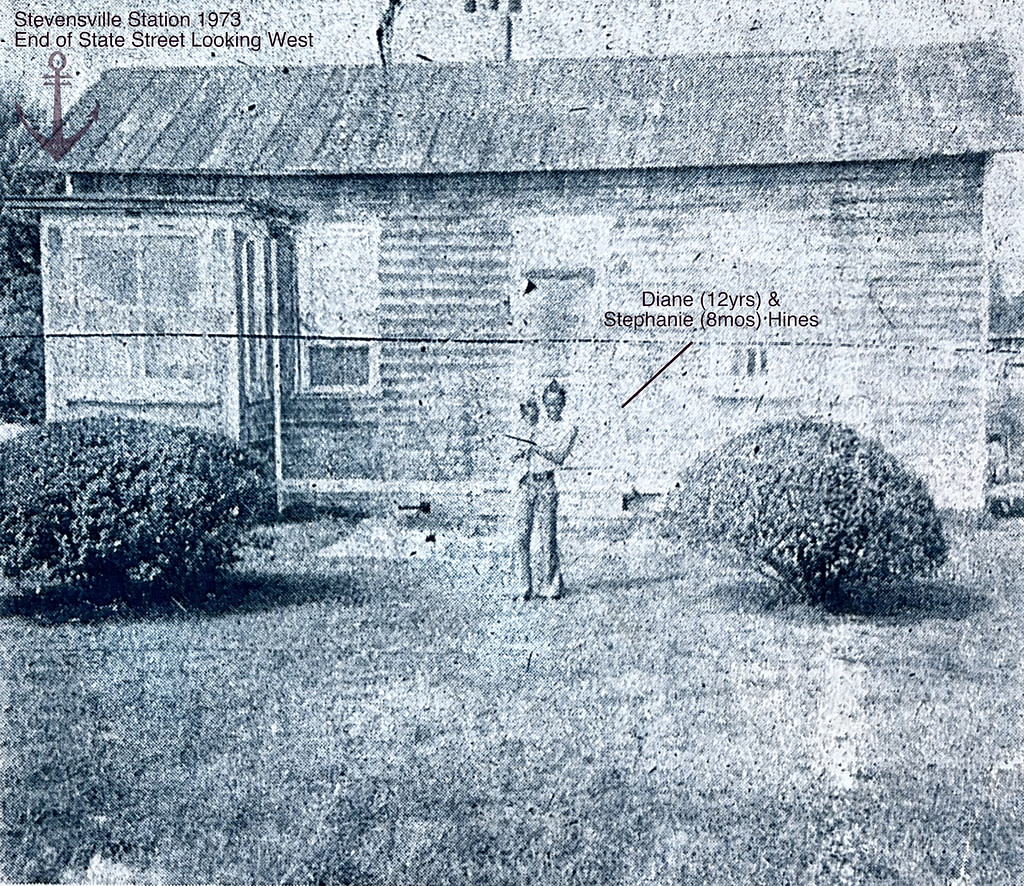
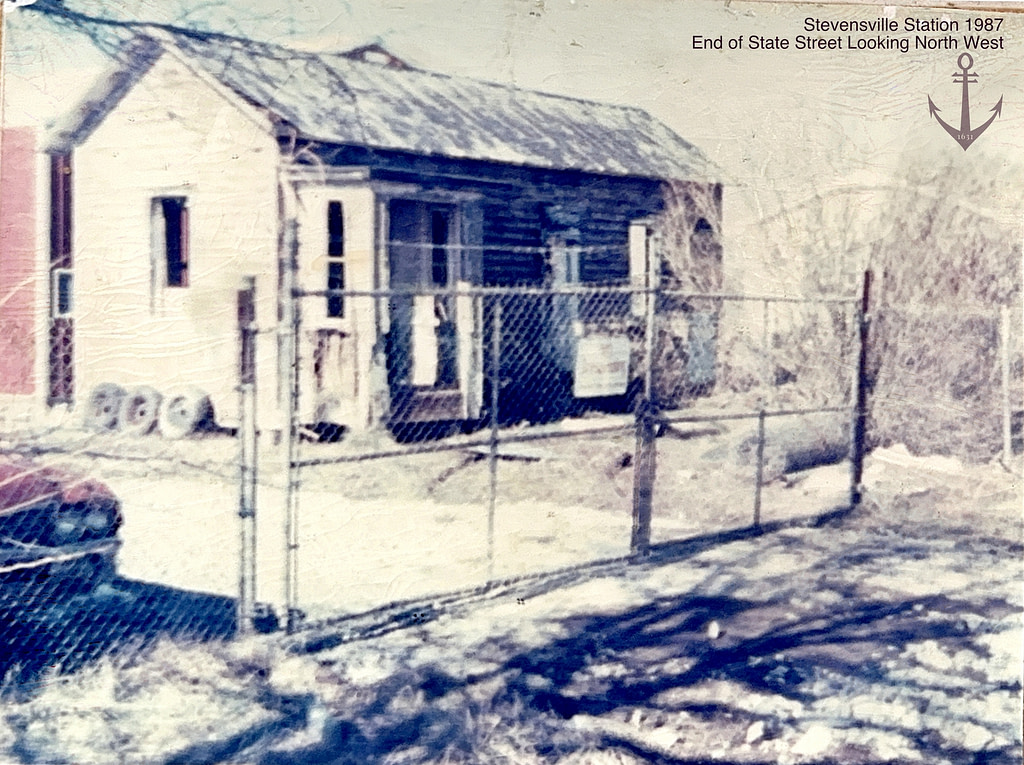
In 1984, Clarence “Skip” Morgan purchased the property on which the structure stood, but was unaware of its existence and significance as nature had begun the repossession process. Skip discovered the dilapidated building three years later when he decided to build Stevensville Auto Body. The station now stood in the way of his body shop and would have to be razed… or relocated.
People ordinarily disregard the importance of historic buildings on Kent Island as they are destroyed to make way for “progress.” However, Skip’s friend and local artist Barbara Koenig (1921-1997) recognized the station from a postcard and suggested getting in touch with the Kent Island Heritage Society (KIHS) about saving the landmark. So they made a call to society president and proprietor of Kent Island Pharmacy, Charles “Gil” Dunn (1918-2015), better known as Doc. With the ambition of prizefighters, the group opted to save the fragile heap of wooden bones by moving it to a new site.
With Skip’s building deadlines fast approaching, the undertaking had to be completed as soon as possible, but with prudence. The team began planning and searching for any willing bodies to help. One morning in early June 1987, Doc arrived at the site to find more than a dozen skilled Bay Bridge construction workers from Whiting-Turner ready to move the old girl. Consultant and retired businessman, Mike Casey made the arrangements and hope filled the air as the kindhearted team of volunteers laboriously set to work.
After a careful inspection of the framing, a massive crane lifted the 32 by 12 foot ruined shape onto a specially modified flatbed truck. Then a bulldozer cleared a path from the end of State Street to Old Love Point Road so the journey could begin. Assisted by Bobby Snyder Jr., the convoy carefully made its way through and across the split onto Love Point Road. Turning left on the newly completed Business Parkway bypass, they headed southwest towards the deadend of Cockey Lane across the street from present day Schooner Parkway. A broad drainage ditch stood in their way so the crew constructed a makeshift bridge, then continued south 1300 feet down Cockey Lane.
In a matter of hours, they had arrived at the station’s final destination, a piece of land behind the Cray House donated by Roger Eisinger. Here awaited temporary piers, laid by Orem Thompson using bricks from Stevensville’s old Methodist Church bulletin monument. The station rested for about a year, then Tom Sappington and his team repositioned on a formal block foundation. This set the stage for the full restoration that was to come.
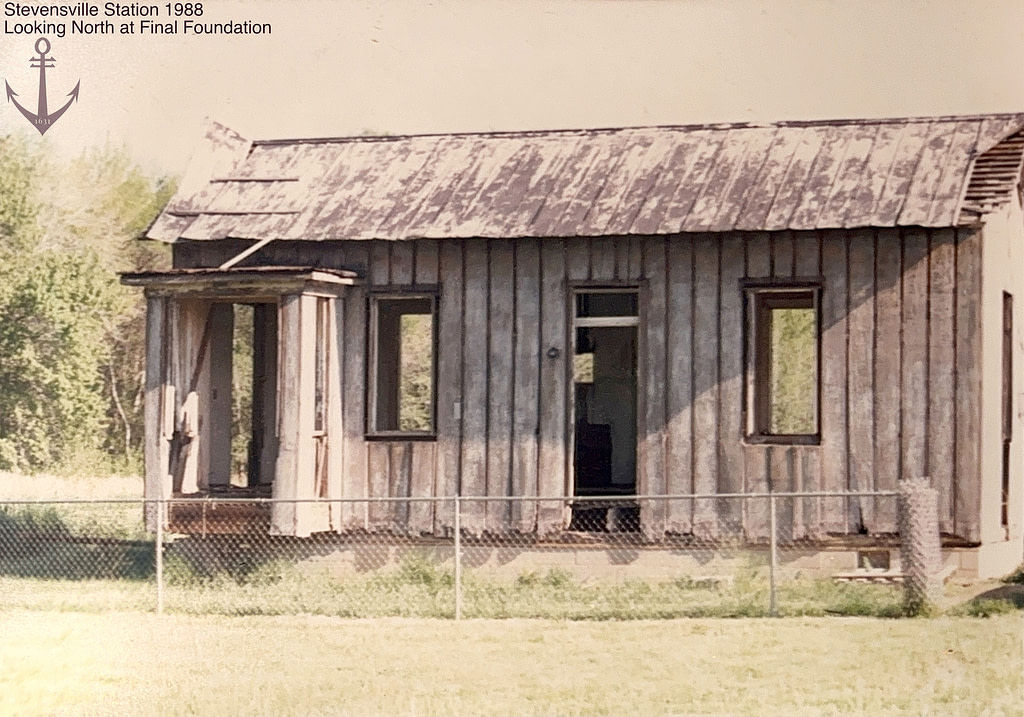
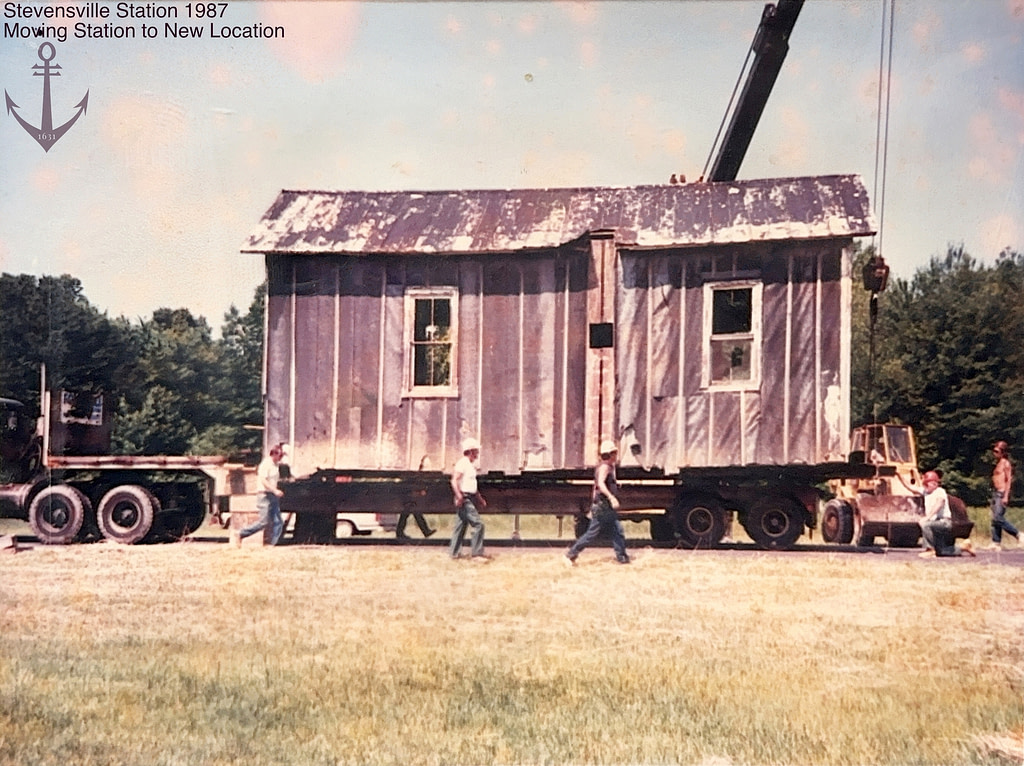
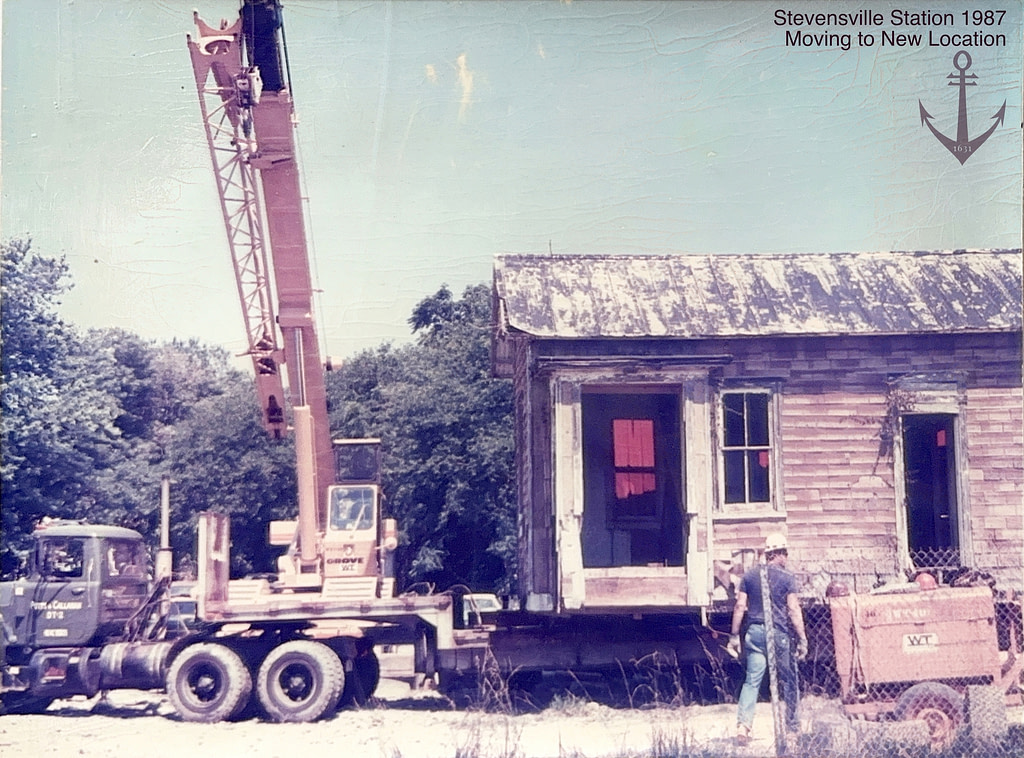
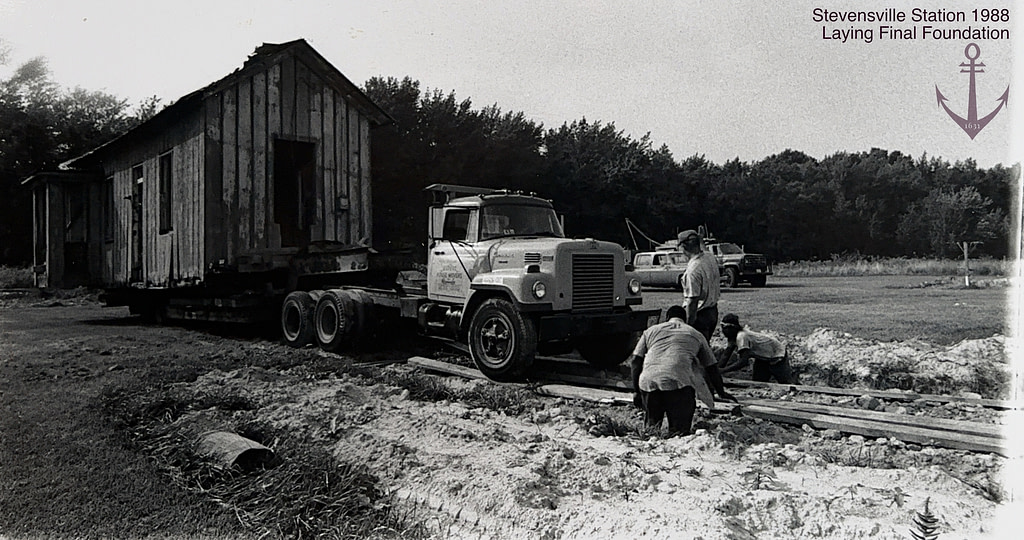
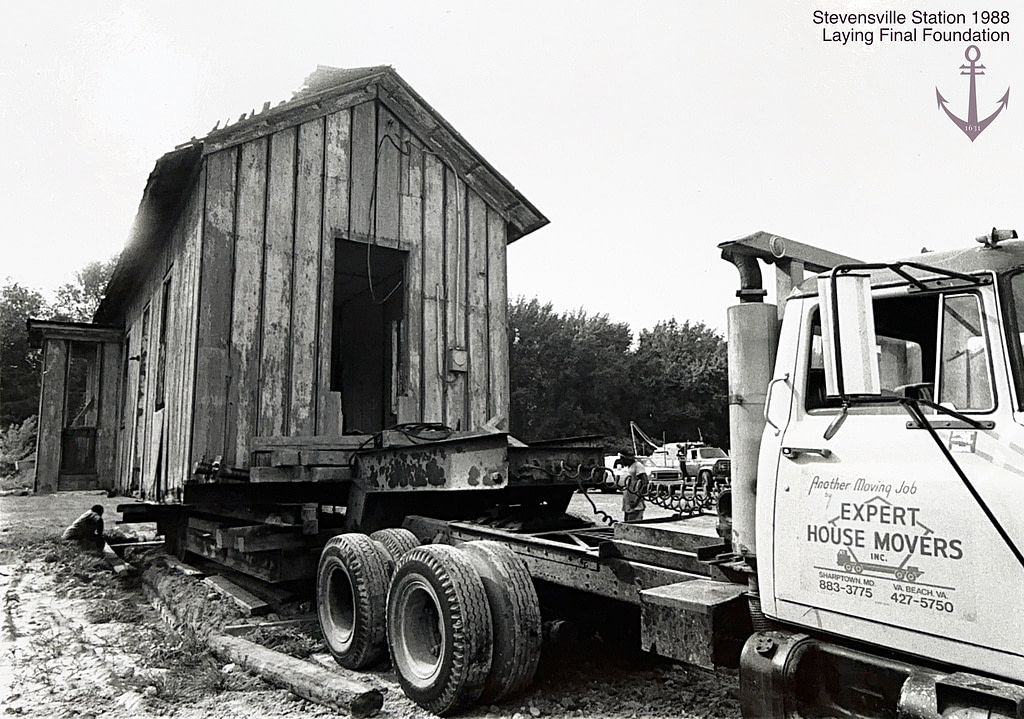
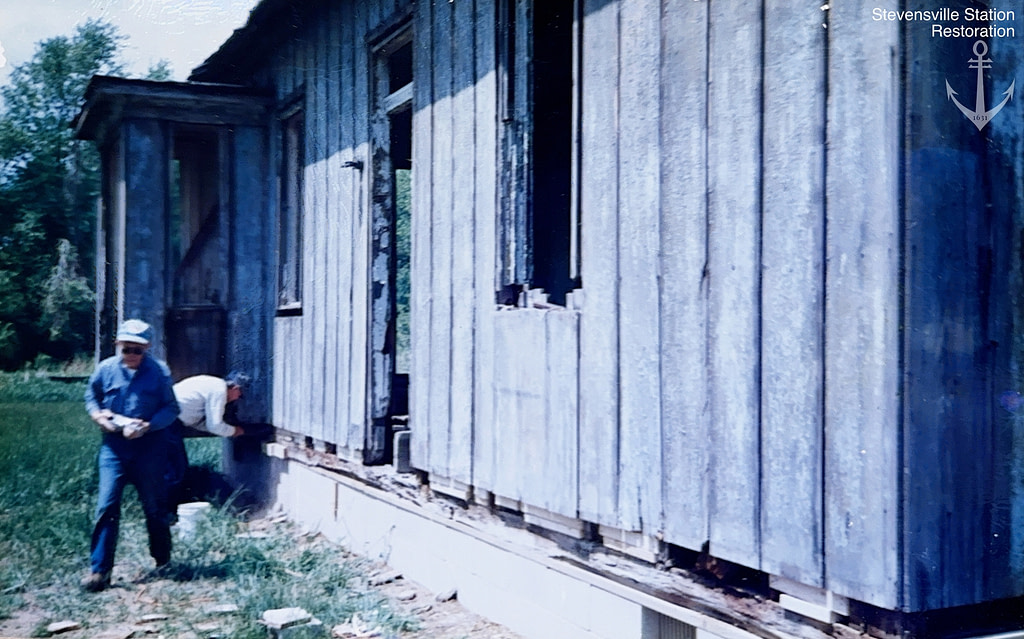
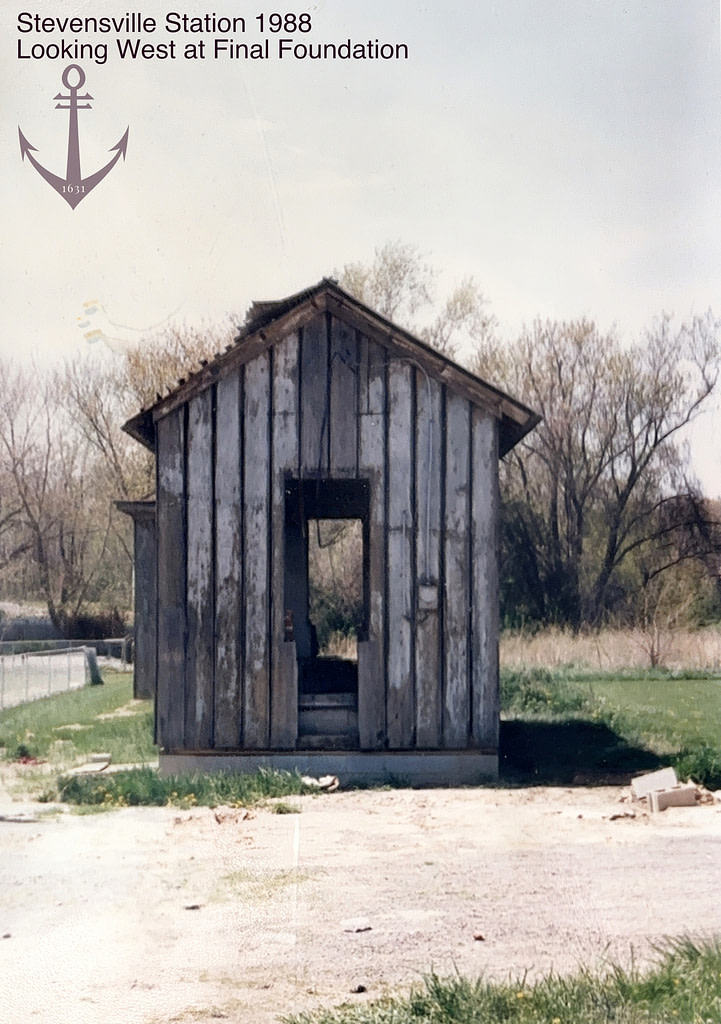
Kent Island Heritage Society members Gil Dunn, Mel Clark, and Norman “Dick” Park headed up the operation. By September 1989, the station had received a new roof, windows, exterior boards, rafters, and posts to the tune of almost $10,000, but the exterior was essentially complete. All that remained was a coat of mustard yellow paint. The interior was next, as was a bonus addition of a rail bed and platform to bring the project to life.
Chuck Lansinger performed the required electrical work while Mel began on the outside decking and steps leading into the station. Richard Dadds and Cliff Lowe Jr. retrieved ties from Massey, MD, donated by The Maryland and Delaware Railroad. Bill Moore supplied the track and slag from Langenfelder Marine at Love Point, completing the railroad exhibit.
The Kent Island Heritage Society set out to save an important part of our island history from its demise in 1987. Over the following five years, and with the help of financial benefactors and numerous volunteers, they completed that mission. The newly restored and renamed 1902 Stevensville Train Depot made its public debut in June 1992.
Melvin Clark’s impressive memories of the station’s heyday were a massive asset to this project. Born in 1922, Mel was 16 years old when the passenger service ended in 1938. He nostalgically spoke of heading to the station to pick up the Centreville weekly for his paper route. He and his father also shipped oysters and crabs by freight train, but stated it became too expensive during the Great Depression when wholesalers paid next to nothing for seafood.
Today, you can visit the fully restored station-turned-museum in downtown Stevensville off Cockey Lane behind present day Amalfi Coast. A 31 ton Baltimore & Ohio Railroad red caboose donated in 2006 now accompanies the station. The property and sites are owned and maintained by the Kent Island Heritage Society.
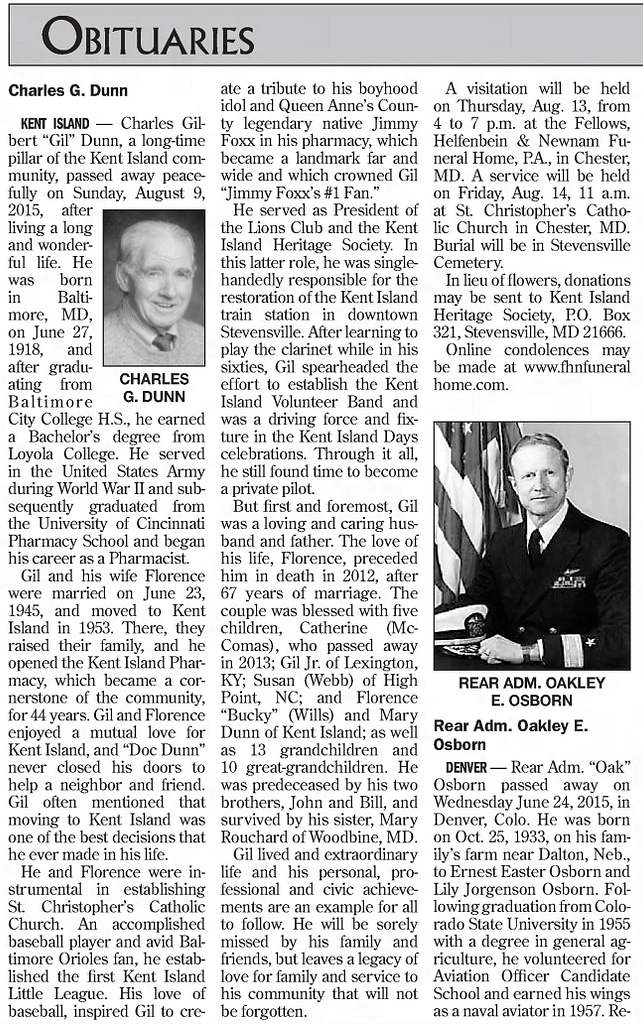

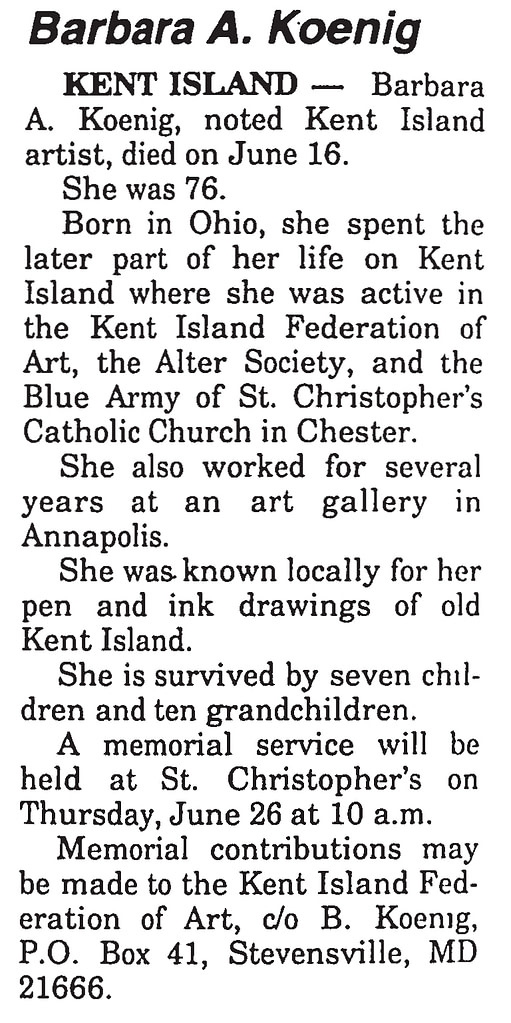
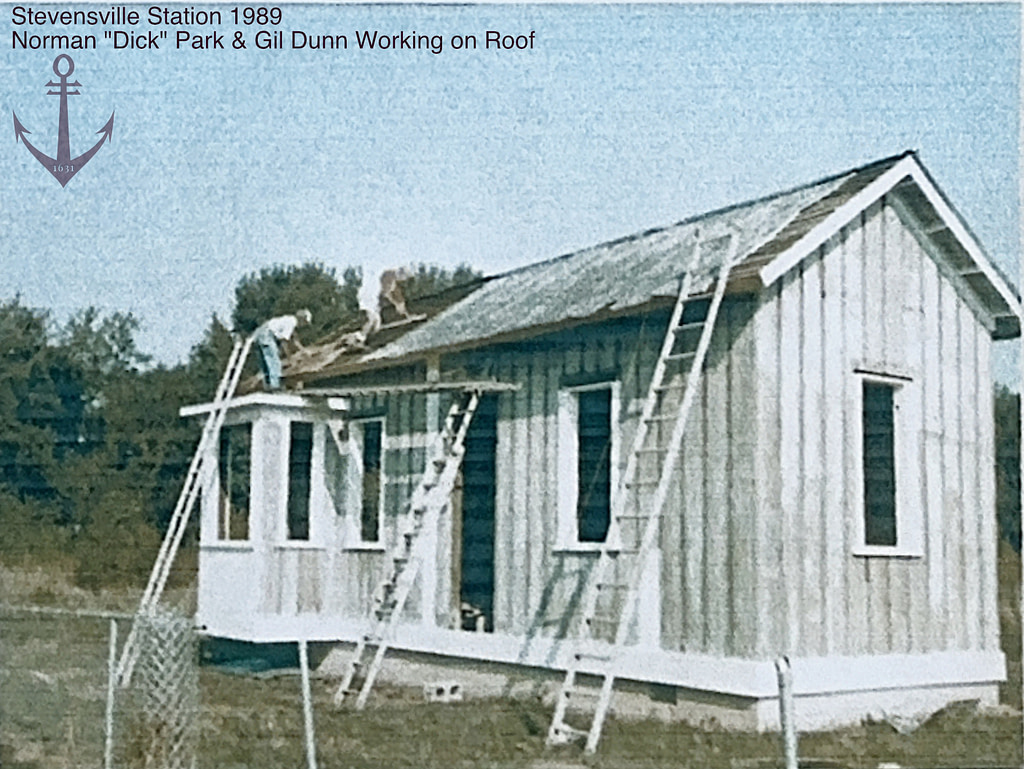
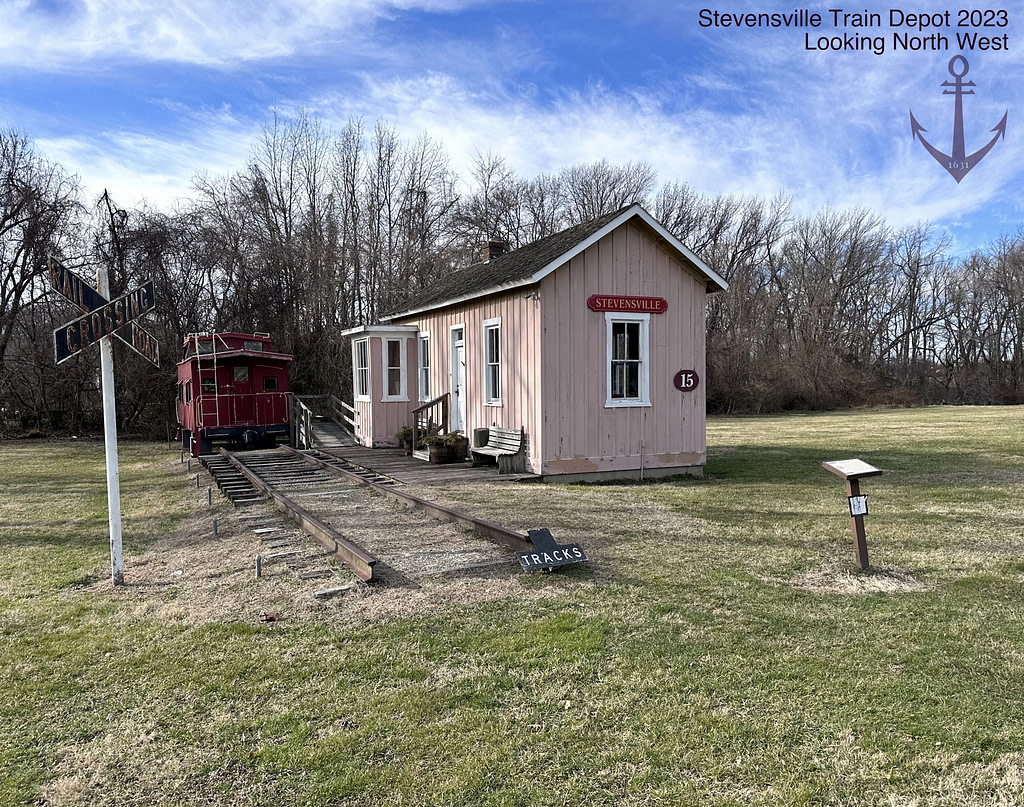
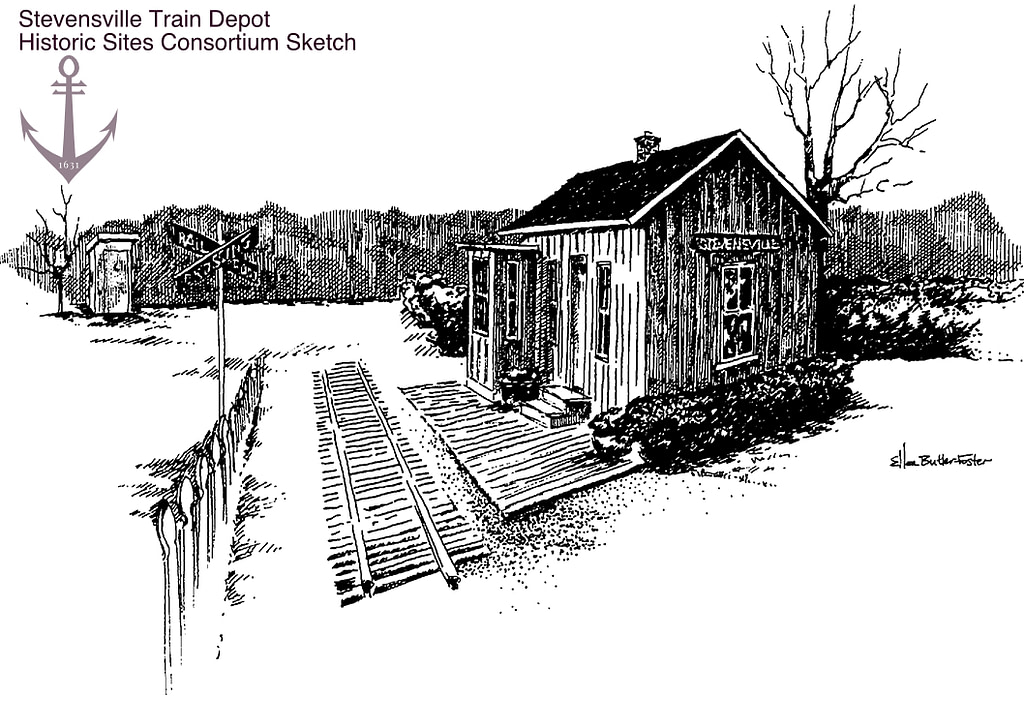
Although few islanders remain that remember the iron horse and steel rails, the saving of the Stevensville Station provides a glimpse into the past… and may have opened a door to the spiritual world. Locals have reported hearing a locomotive whistle throughout Stevensville. This may seem far fetched, but I too have heard it.
When I was about 12, I played for the Kent Island Soccer Select team. We held evening practice under the lights at Old Love Point Park, in the field next to the present day Cross Island Trail. One night, a roaring howl, much like the air horn of a Mac truck, came blaring through the wooded canopy covering the old rail bed (the trail). It was so powerful that we all shuddered and froze in surprise when the sound hit us.
Even our coach was baffled. Attempting to brush it off, he claimed it was probably a tractor trailer on the highway. Sure, maybe, except that Route 50 is over half a mile away as the crow flies and trucks of that type never made their way into town. Plus, we’d practiced on this field many times and had heard nothing like this. Nervously laughing it off, the team dispersed as our parents arrived to take us home.
Later that night, I told my dad the story, describing how everyone heard the screaming sound like it was right next to us. He smiled and explained that the old railroad used to run along the same path that the new Cross Island Trail was being built upon. Then he said, “maybe you heard a ghost train.” I was floored, but filled with excitement. My own father was suggesting the supernatural over a practical explanation. How cool is that? I wasn’t entirely sure if he was messing with me, but I told a few teammates about the ghostly theory anyway. My adolescent life quickly moved on and the affair faded.
Years later, my good friend, JR Ross, and I were drinking beer and solving the world’s problems at his house in Cloverfields, within earshot of Old Love Point Park. We were chatting about where the old railroad ran through Stevensville, which led to me telling him about that night. His eyes widened with every word of my ordeal with the ghost train. Suddenly JR jumped off the tailgate of the truck, threw his cigarette on the ground and in a panic told me he, too, had heard the train whistle.
I was in awe and inquired further. JR said in the summer he has always left his bedroom window open, which faces the direction of the park. On more than one occasion, he had heard what sounded like a steam train whistle echoing in the distance. Thinking it odd, but having no explanation or reason to tell anyone, he brushed it off until our talk that day.
My conversation with JR confirmed what we had all heard and only deepened the mystery. Over the years, I’ve heard others mention the ghost train without my prompting. Here’s a small sampling of online comments:
“Does anybody know if there is a running train on the island[?] I have heard a train at night several times but can’t find one.”
“… I heard it when I moved here. Folk Lore is that the train whistle still goes, even though there is no train here anymore. Maybe it is the GHOST train from Stevensville.”
“I can’t believe you spoke of a train… There’s (sic) been so many people I’ve spoken to through the years who have said the same thing… That’s great, another story about the train. Must have some validity to it. You are among many who’ve told the same tale.”
Could it be that the Kent Island Heritage Society awakened spirits of a long gone railroad when they brought Stevensville Station back to life? Perhaps we will never know.
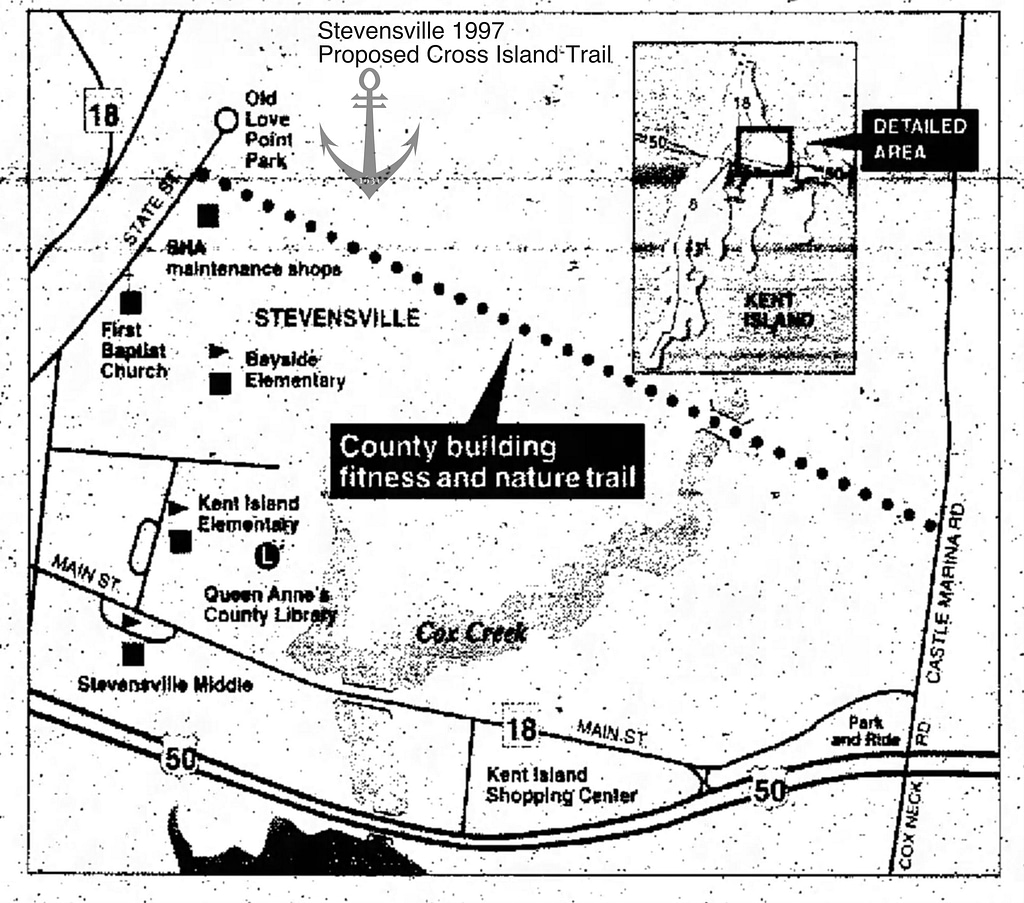
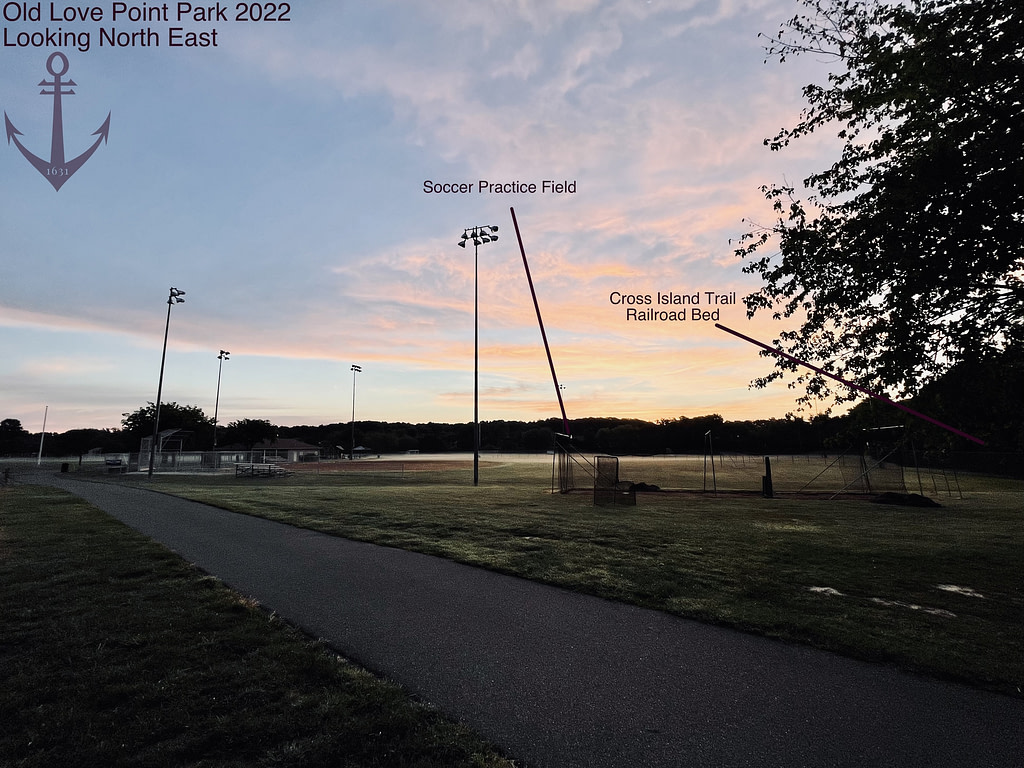
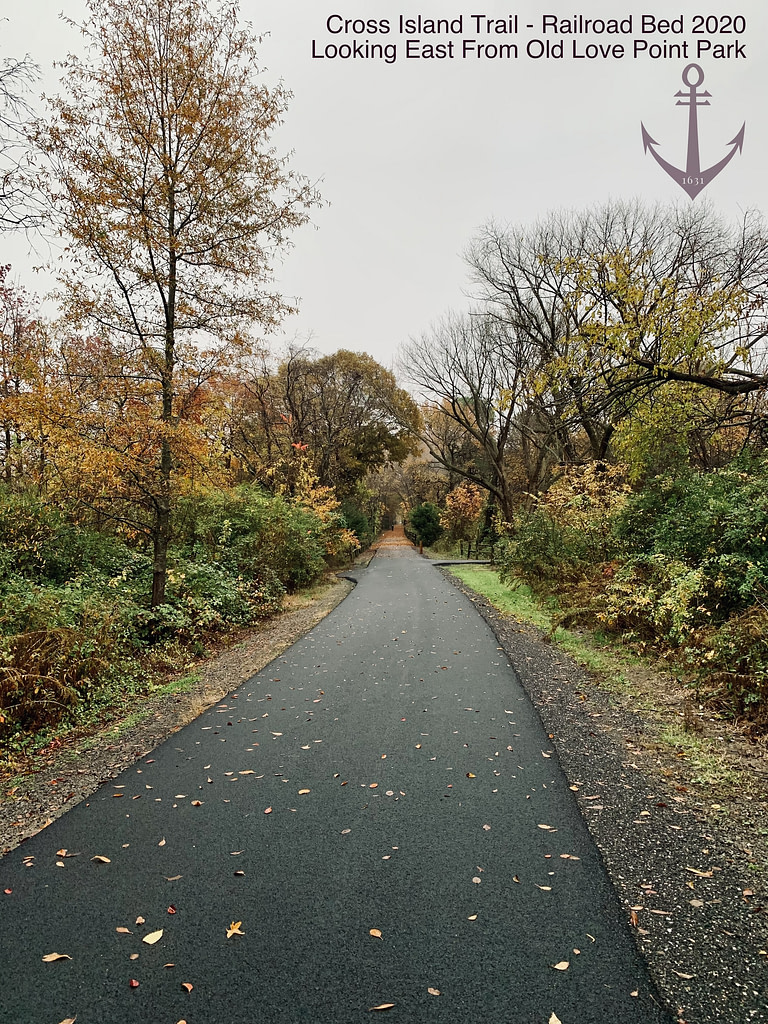
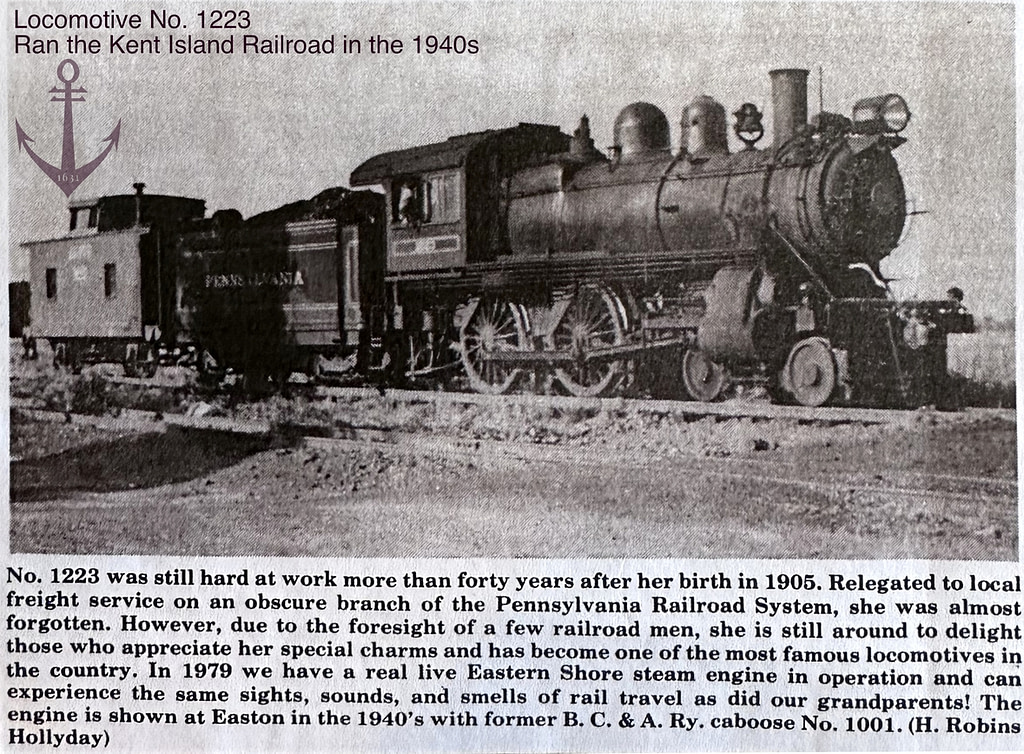
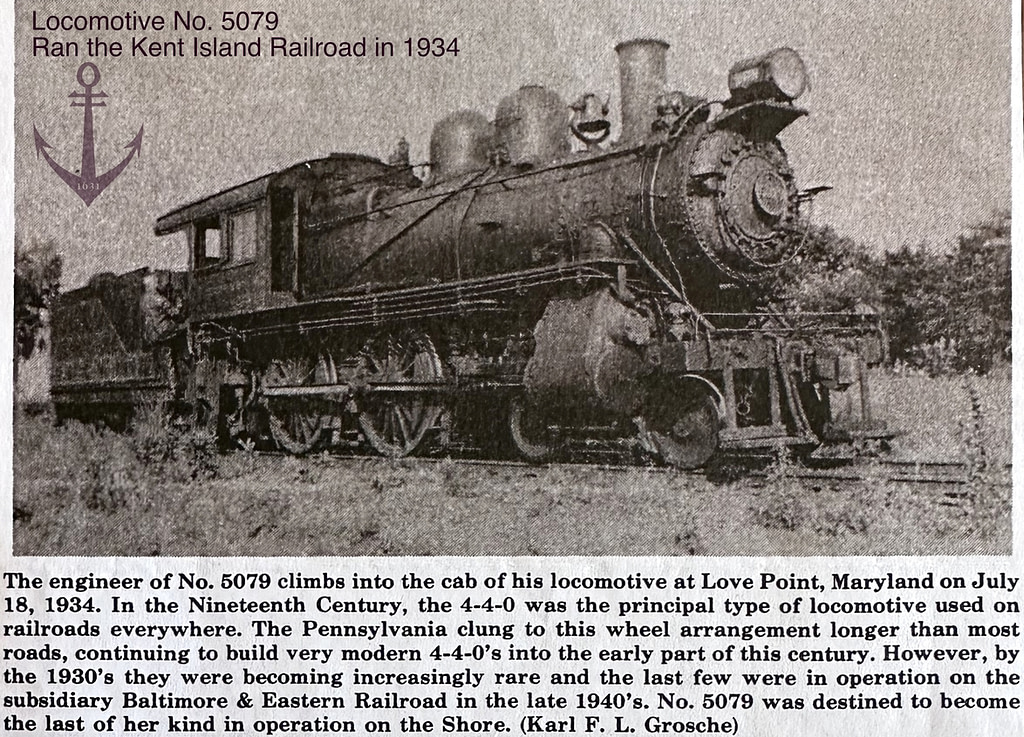
If you enjoyed this Memoir of Kent Island, please donate so that we can research, write, and publish more. Thanks for your support.
Volunteers in the Saving of Stevensville Station:
Roland Bruscup (Built model buildings, tracks, and boats)
Elizabeth “Liz” Bukowsky (Painted mural)
Tom Burton
Michael Casey
Melvin “Mel” Clark (Oversaw restoration)
Dick Deads
Bill Denny
Charles “Gil” Dunn (Initiated the project and and various restoration projects)
Florence Dunn
Bill Eckstorm
Roger Eisinger
”Peb” Foster
Friel Foundation
Kent Island Garden Club
Garrett German
Tom Harmon Collier
Barbara Koenig
Chuck Lansinger
Brad & Maggie Lewis (Donated the potbelly stove)
Bill Loudermilk
Cliff Lowe Sr.
Cliff Lowe Jr.
George Luther
Duane McCauley (Designed and painted platform)
Jackie Moore
Bill Moore
Nathan Morris
Norman “Dick” Park (Reconstructed framing of the building and added the roof)
Anne Reifsneider
Brian Richter
Tom Sappington (Built foundation and chimney)
Robert Sellers
Shore Sign
Bobby Snyder Jr. (Transported to new location)
Willard Thomas
Edith Turner
Robert Walters
Mary White
Dean Wickline
Jim Wills (Donated model train)
Burton Wilson
Walter “Woody” Woodford
Resources:
11/29/1973 - KI Bay Times - Thanks For the Memory
3/25/1987 - KI Bay Times - Society Acquires Station
6/17/1987 - KI Bay Times -Recovering the Past
10/20/1988 - KI Bay Times - Heritage Society Seeks Bricklayers
12/8/1988 - KI Bay Times - Station Receives A Foundation
5/17/1989 - QA Record Observer - Heritage Society Restoring Station
9/1/1989 - KI Heritage Society Newsletter - How's the Train Depot Restoration Coming Along?
9/28/1989 - KI Bay Times - Train Station Receives A Facelift
4/16/1997 - The Capital - County Will Build Cross Island Trail
KI Heritage Society Newsletter - Recollections of Stevensville Railroad Station By J. William Eckstorm Jr.
Various Articles Written By Gil Dunn
Pictures Courtesy of:
The Kent Island Heritage Society
The Queen Anne's Railroad Society
Historic Kent Island Private Collection

0 comments